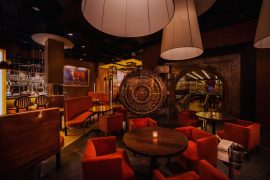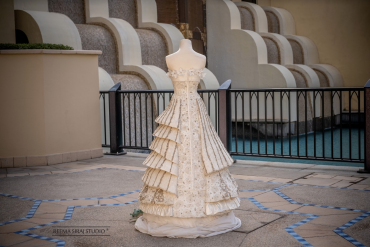You’re standing atop a hundreds of years old stone wall, looking out over waves of the Caribbean Sea crashing into the beach. The city is relaxed, cosmopolitan, and tropical. It is a foodie’s, and a history buff’s, paradise. Low key and luxurious. Very old and very new.
What it isn’t is a drug war zone, but that’s what people might think when you tell them you’re going to Cartagena, Colombia. Blame it on lingering news images from the 80s. While Colombia has rebounded generally, people in Cartagena told me their city was never quite like that.
I spent 5 fantastic days in mid July in Cartagena. It’s full name is Cartagena de Indias, Cartagena of the Indies, and that accounts for why I felt like I was right at home among the Caribbean people my West Indian family came from—because I was. The city has a dual personality, split between an old town—La Ciudad Antigua—defined by 16th-century fortress walls and a new city, soaring up from a peninsula with highrise hotels and apartment buildings. Construction is booming on the peninsula, with several new hotels going up.
The night I arrived, a wedding party was being held on one of the galleons that are docked in the Las Ánimas Bay. Fireworks from the reception lit up the sky.

Cartagena is on the rise as a destination wedding location, but note that if you are not Colombian, your civil and legal marriage would have to take place in your home country. Still, Cartagena opens its doors to you—even the nearly 500-year-old Castillo San Felipe fort that overlooks the city is available as a venue for your special celebration.

Same sex marriage is legal in Colombia, so a same-sex couple should expect a welcoming environment for their wedding festivities. The Cartagena Chamber of Commerce will be launching a program to help couples plan weddings in their city in the coming months.
You and your party would certainly be well-fed. The food in Cartagena is delightful. Given its Caribbean location, I was on a mission to eat as much fried fish and ceviche as I could. I tried both at several restaurants. My favorite fried fish was served at Pizza & Pasta in the Old City. For the bargain price of around 11,000 pesos (about $6 USD), not only was I served an entrée of fried fish, rice, salad, and lentils, but the meal was preceded with a banana and a delicious bowl of ajiaco, a soup with beef, chicken, corn, and other veggies. I washed it all down with agua de panela, a light, refreshing, not too sweet drink made from sugar.
My favorite ceviche restaurant was the aptly named La Cevichería, also in the Old City. I tried a sampler of various flavors of ceviche, made of shrimp, fish, and octopus, as an appetizer, and had a wonderful paella for my entrée. La Cevichería, despite being nestled among high-end hotels, was incredibly inexpensive.
What else to do while in town? The Old City is the place for historical and cultural explorations. The Gold Museum showcased the intricate and beautiful jewelry of the ancient indigenous people of Colombia. Next to the Church of San Pedro Claver sits a museum dedicated to his memory, housed in the house where he lived and worked. San Pedro Claver was the patron saint of slaves, who fought a dedicated fight throughout his life for the rights of enslaved people. The Church has beautiful courtyards, an impressive collection of religious art, and—during my visit—was showcasing a collection of Afro-Haitian art. I took a private walking tour of the Church and the Old City, which I highly recommend, and learned about Cartagena’s history as a major port during the time of Spain’s conquest of the Americas. The Old City is also host to public events such as concerts and festivals throughout the year.

Colombia is known for the quality of its emeralds and gold jewelry, so come prepared to shop, as well.
Far more beautiful than the city beaches are those in the Islas del Rosario off the coast. It takes about an hour to reach the islands by ferry from the Cartagena city pier, and a round trip visit package including lunch is easy to book from tour operators throughout the city. The water is clearer and the sand is softer than that of the beaches in the city, so a trip to the Islas del Rosario is a must during any trip to Cartagena.
If you enjoy nightlife, the bars and nightclubs are located in Getsemaní, an older area of town located right next to the walled city. Whether you enjoy spending late nights dancing and drinking or not, make the time to catch a Chiva party bus. For 30,000-40,000 pesos ($15-$20 USD), you will be treated to a live band playing rumba music, a tour of greatest hits, tour of city monuments (which look all that much more intriguing in the moonlight), and unlimited mixed drinks. The liquor served is what is called the national rum, but unlike other rums it is made with anise and has a distinctive flavor. Most chivas get going around 8pm, and will take you to a nightclub if that’s your thing at around 11:00pm – or return you to your hotel if it’s not.
In fact, it was from my seat on a chiva that I witnessed the wedding that punctuated the night sky with fireworks.
Cartagena was high on my bucket list of places to see. But I found that it wasn’t just a place to check off my list and then move on. I cannot wait for my next trip to this beautiful city.





